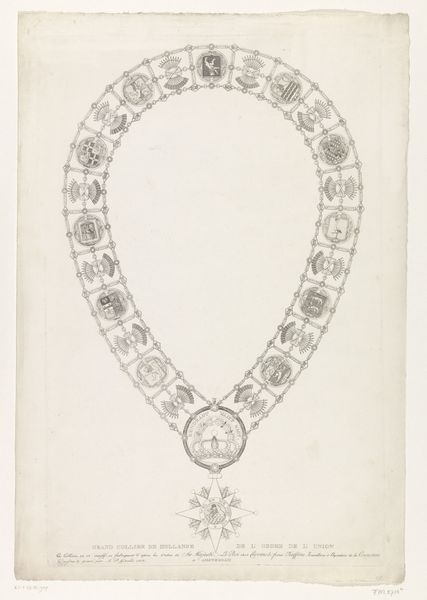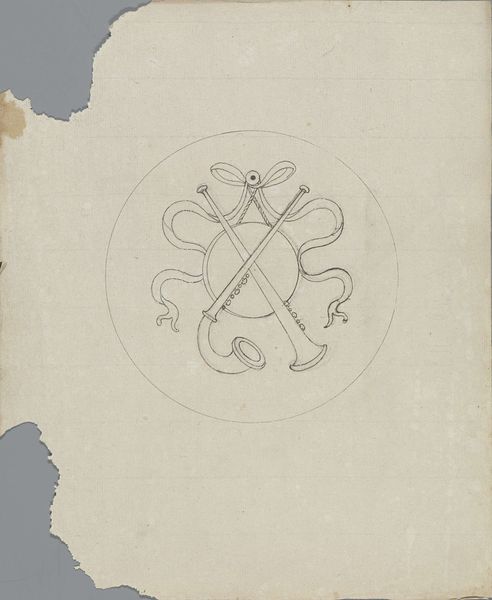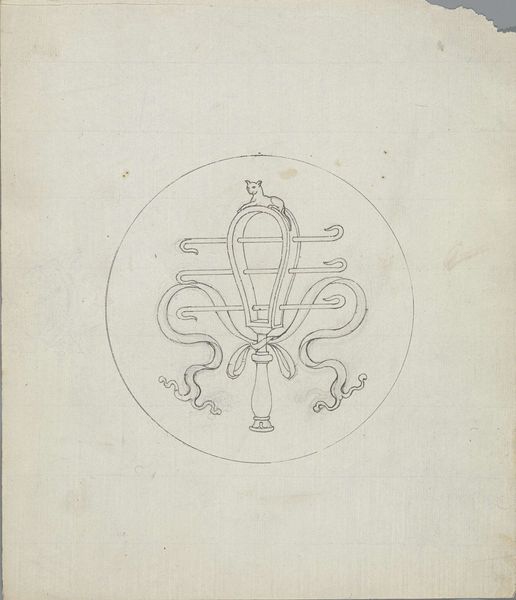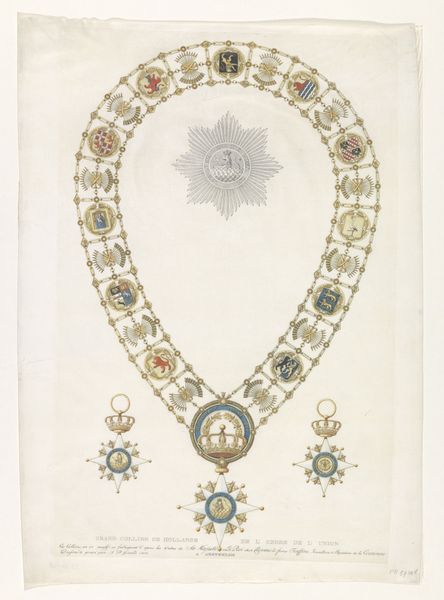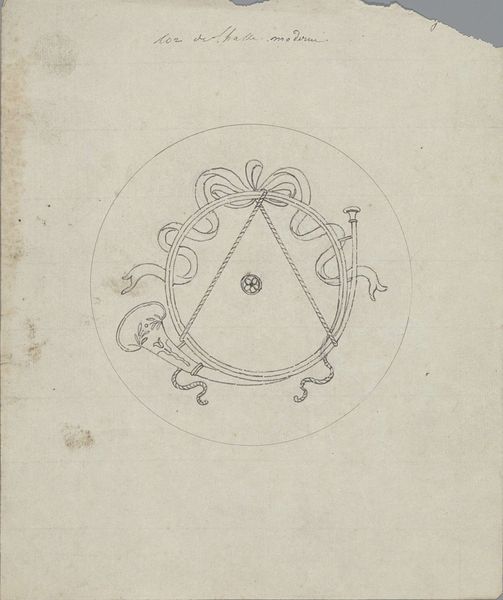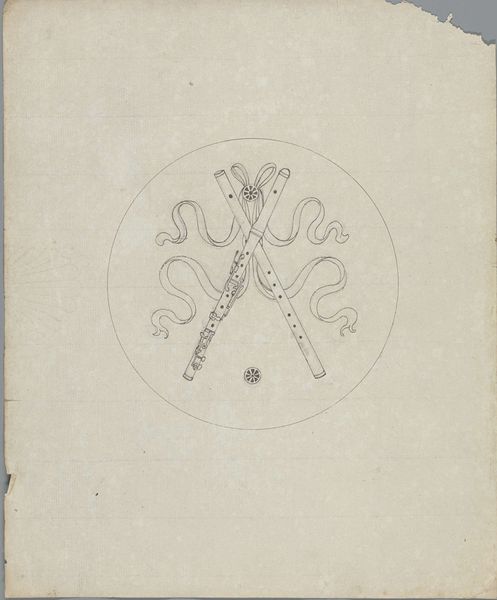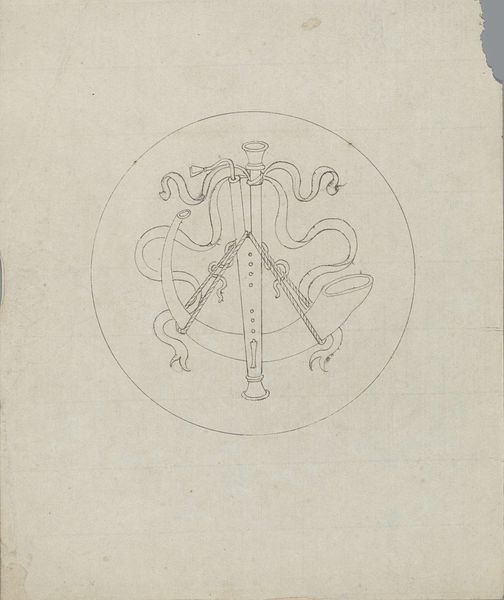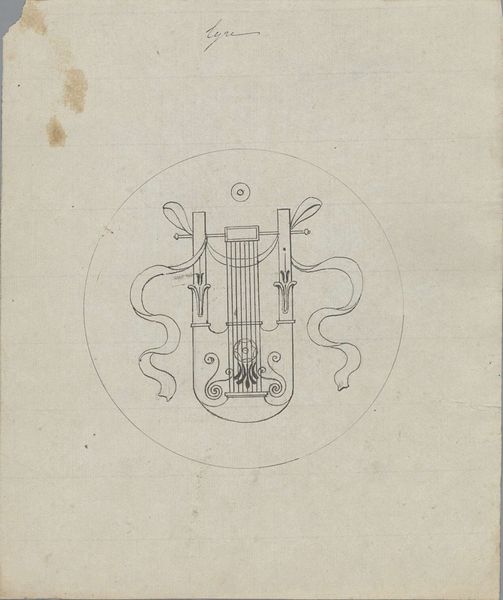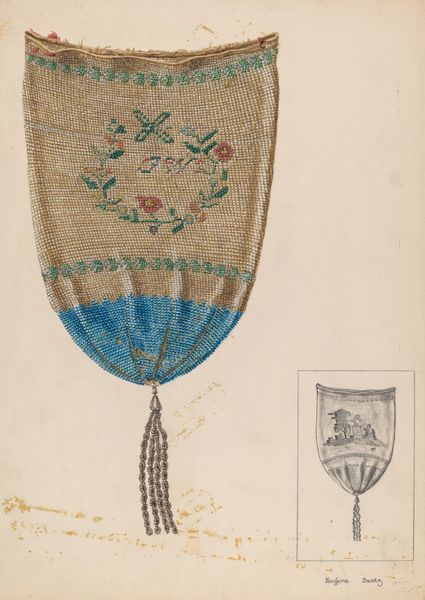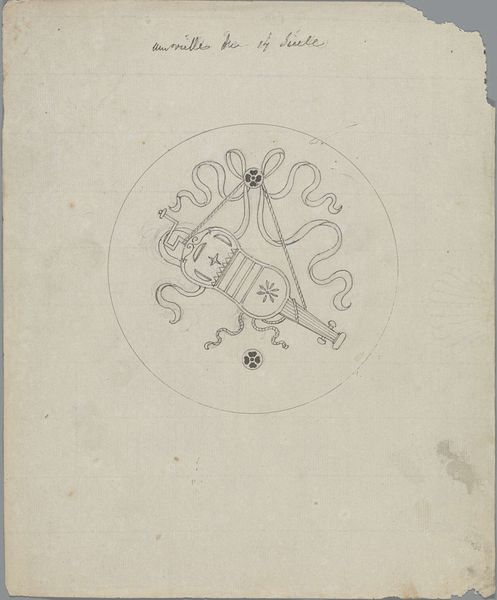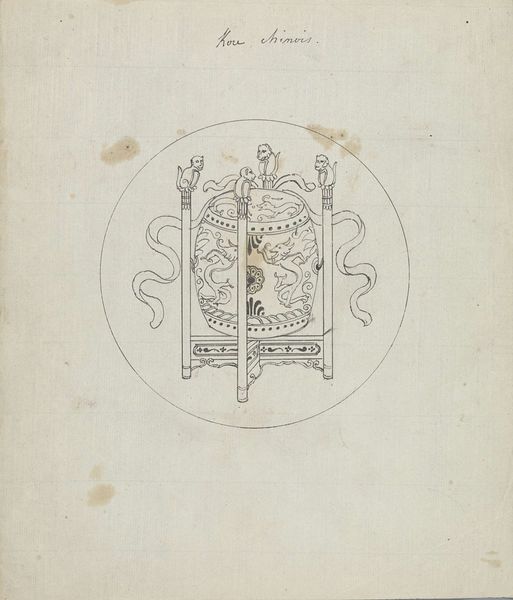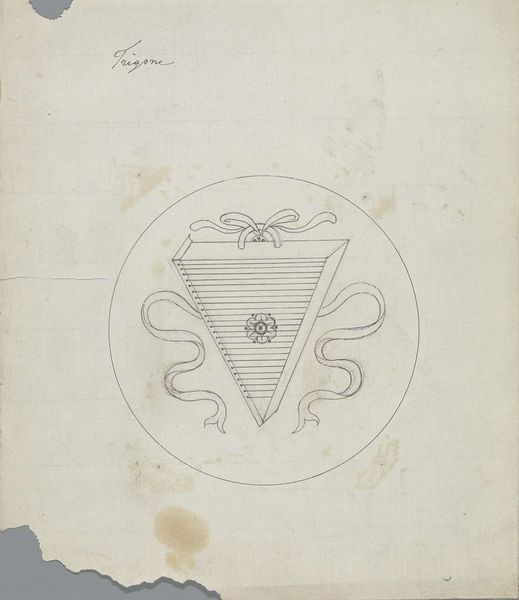
drawing, print, watercolor
#
drawing
#
neoclacissism
#
blue ink drawing
# print
#
curved letter used
#
watercolor
#
geometric
#
watercolour illustration
#
watercolor
Dimensions: sheet: 13 5/8 x 9 5/8 in. (34.6 x 24.4 cm)
Copyright: Public Domain
Editor: This is "Watch Design," a watercolor and ink drawing from 1794 by Delamotte, residing here at the Met. I'm struck by its delicate craftsmanship; it feels both functional and quite elegant. What’s your perspective on this object? Curator: Considering the socio-economic conditions of the late 18th century, such designs illuminate shifts in the perception of time and its commodification. What can the choice of materials tell us about the intended consumer? Watercolor and ink on paper suggest a design meant for dissemination, a pattern for skilled artisans perhaps. Editor: Dissemination? So, this wasn’t necessarily meant to be a unique artwork but a template for mass production? Curator: Not necessarily "mass" production in the modern sense, but widespread accessibility. How does this contrast with the value often placed on unique, 'high art' objects of the same era? And what of the floral decorations? They are not merely decorative. Consider the resources required for their execution, both materially and in terms of the artisan’s labor. Who benefits from this expenditure? Editor: That’s fascinating. So the flowers become almost a political statement tied to production. I was simply viewing them as a pretty Neoclassical ornamentation! Curator: Exactly! Think about the social networks implicated in obtaining pigments, producing paper, even the very concept of leisure time represented by the watch itself. Whose labor is rendered invisible in this design? The production process itself dictates the object's value and communicates social status. Editor: I never thought of analyzing an object’s beauty based on its "invisible" cost in labour. It really does offer a deeper understanding of the artwork, doesn't it? Curator: It allows us to decode the inherent social relations embedded within the piece. It pushes beyond a surface-level interpretation, to see a microcosm of 18th-century society in this single "Watch Design".
Comments
No comments
Be the first to comment and join the conversation on the ultimate creative platform.
